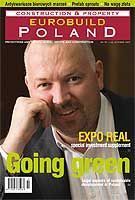In the final reckoning, the country’s top four investors together spentapp. EUR 1,029 bln on Polish real estate between Expo Real 2006 and Expo Real 2007. They have agreed to take part in our survey, allowing us to gain an insight into their perceptions of the investment climate in Poland, possible new market niches, yield forecasts and much moreING Real Estate Investment Management (EUR 329 mln)Martin Sabelko, managing director investment management Central Europeå It was a great period for our team in Poland. We have grown assets under management from EUR 149 mln to EUR 474 mln (218 pct). We are very lucky with our acquisitions. These are the crucial points of our activities. In addition, we represent the largest real estate company and have sufficient sources to react on investment opportunities.ç Poland is a market we would like to invest in, with very good economic grooving conditions and has matured sufficiently for the investment. We find the Czech Republic als






























































